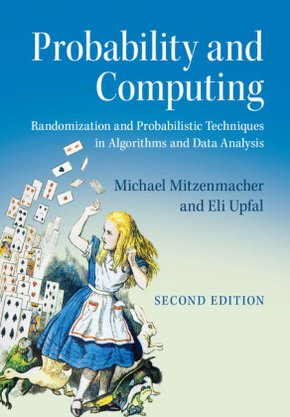Probability and Computing - Randomization and Probabilistic Techniques in Algorithms and Data Analysis
| Verlag | Cambridge University Press |
| Auflage | 2017 |
| Seiten | 484 |
| Format | 18,2 x 26,0 x 2,5 cm |
| Gewicht | 1153 g |
| Artikeltyp | Englisches Buch |
| ISBN-10 | 110715488X |
| EAN | 9781107154889 |
| Bestell-Nr | 10715488UA |
This greatly expanded new edition offers a comprehensive introduction to randomization and probabilistic techniques in modern computer science.
Greatly expanded, this new edition requires only an elementary background in discrete mathematics and offers a comprehensive introduction to the role of randomization and probabilistic techniques in modern computer science. Newly added chapters and sections cover topics including normal distributions, sample complexity, VC dimension, Rademacher complexity, power laws and related distributions, cuckoo hashing, and the Lovasz Local Lemma. Material relevant to machine learning and big data analysis enables students to learn modern techniques and applications. Among the many new exercises and examples are programming-related exercises that provide students with excellent training in solving relevant problems. This book provides an indispensable teaching tool to accompany a one- or two-semester course for advanced undergraduate students in computer science and applied mathematics.
Inhaltsverzeichnis:
1. Events and probability; 2. Discrete random variables and expectations; 3. Moments and deviations; 4. Chernoff and Hoeffding bounds; 5. Balls, bins, and random graphs; 6. The probabilistic method; 7. Markov chains and random walks; 8. Continuous distributions and the Polsson process; 9. The normal distribution; 10. Entropy, randomness, and information; 11. The Monte Carlo method; 12. Coupling of Markov chains; 13. Martingales; 14. Sample complexity, VC dimension, and Rademacher complexity; 15. Pairwise independence and universal hash functions; 16. Power laws and related distributions; 17. Balanced allocations and cuckoo hashing.
Rezension:
'As randomized methods continue to grow in importance, this textbook provides a rigorous yet accessible introduction to fundamental concepts that need to be widely known. The new chapters in this second edition, about sample size and power laws, make it especially valuable for today's applications.' Donald E. Knuth, Stanford University, California

